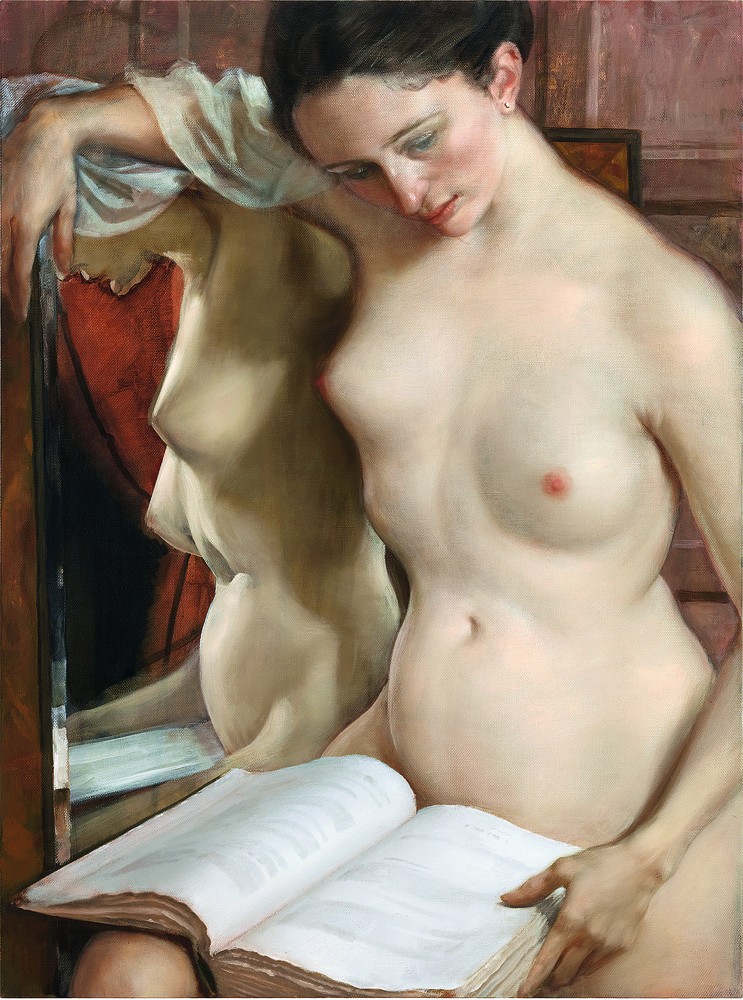Against Lust: An Interview with John Currin
In talking about his work, John Currin constantly draws attention to the fact that he uses his subject matter to draw our attention somewhere else. He wants to distract us. Over the last 20 years, it has been easy enough to notice (or put another way, impossible not to notice) what he has painted: women with absurdly large bosoms, oddly elongated portraits of too-breedy society women, nerdy, bearded men accompanied by adoring nubiles, nudes that combine magazine advertisements with Old Master quotations, glowing portraits of his wife and muse, the artist Rachel Feinstein, and men and women engaged in sexual acts that go some distance in putting the hard back into hardcore. Taken together, these groups of paintings have made him famous (or put the same other way), infamous. John Currin never leaves you sitting on the fence.
What is becoming more frequent in the writing about his work is that critics are concentrating on how he paints. This is his earnest hope and desire. Once you get over the what of the painting, what holds your rapt attention is the how. The illuminating sample of his work spanning almost two decades that was on exhibition at Montreal’s DHC/ART Foundation for Contemporary Art (from June 30 to November 13, 2011) made clear how good a painter he is and how effective have been his decoy aesthetics in bringing that quality to our attention.

John Currin, The Reader, 2010, oil on canvas, 48 x 36”. Private collection. All images © John Currin. Photographs: Robert McKeever. Courtesy Gagosian Gallery, New York.
In the following interview he describes himself as an expressionist, a claim that requires some elaboration. His use of the term carries with it no conventional antecedents–whether abstract, neo or national. Given his tendency to use his subjects as deflections for some other purpose, I would argue that he has initiated a style of art that might be called Distract Expressionism.
If he were a hunter, he would have the best decoys in the field; if he were a shop owner, his paintings would be loss leaders to get you into the store so he can sell you the real merchandise; if he were a hustler, you’d soon discover that the sexual come-on is pushing hard for transcendence. In talking about the porn paintings, Currin rightly observes they are “as close as I’ve gotten to painting against lust.” His strategy was to make something beautiful out of a degraded image, to turn the vicarious and the sexual into the painterly.
–
John Currin was interviewed by Border Crossings in October, 2011. To read the full interview, pick up Issue 120 or click here to subscribe.

